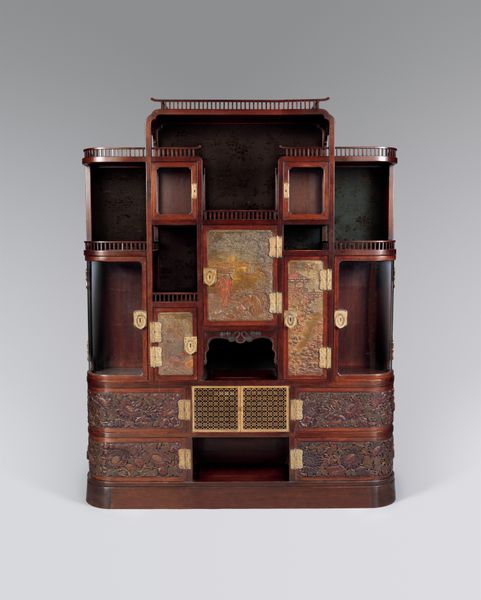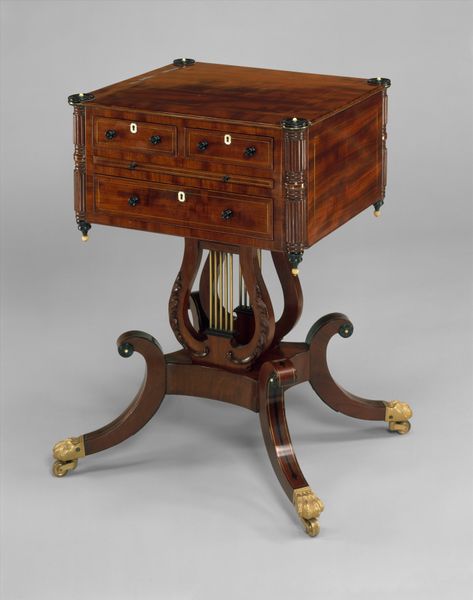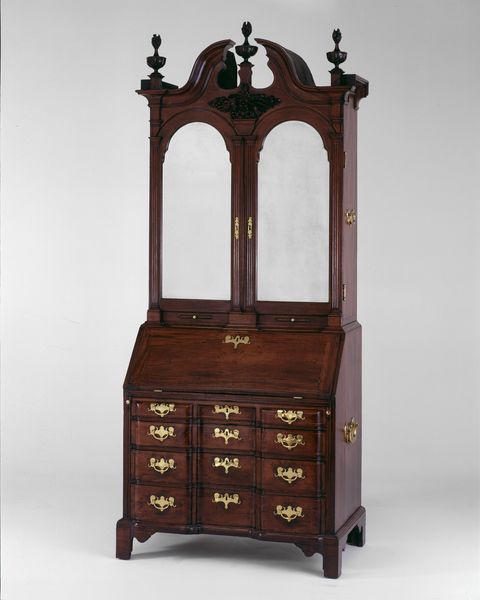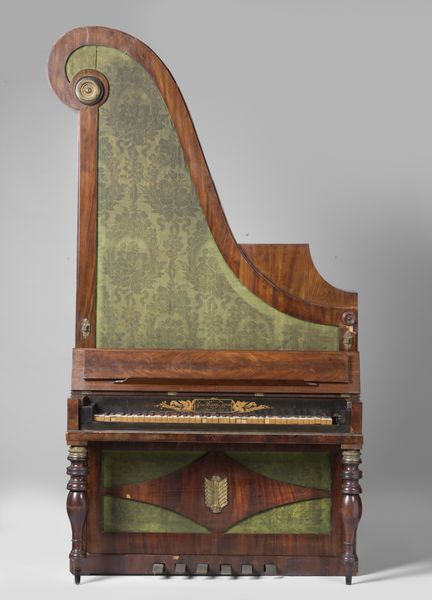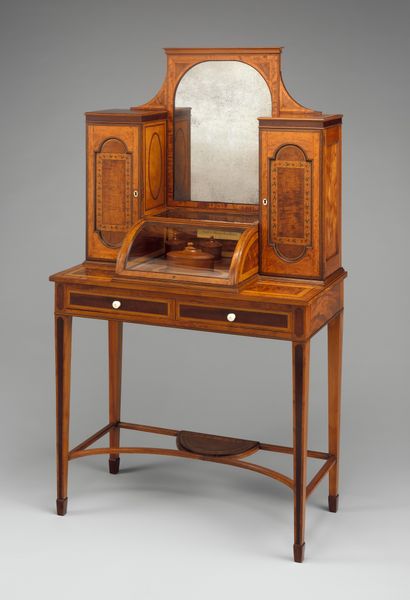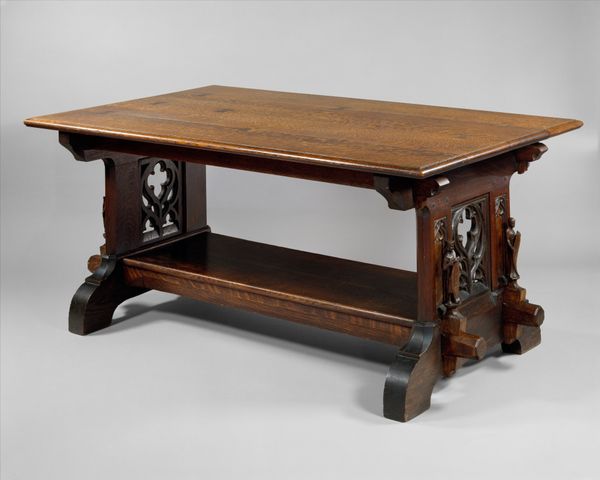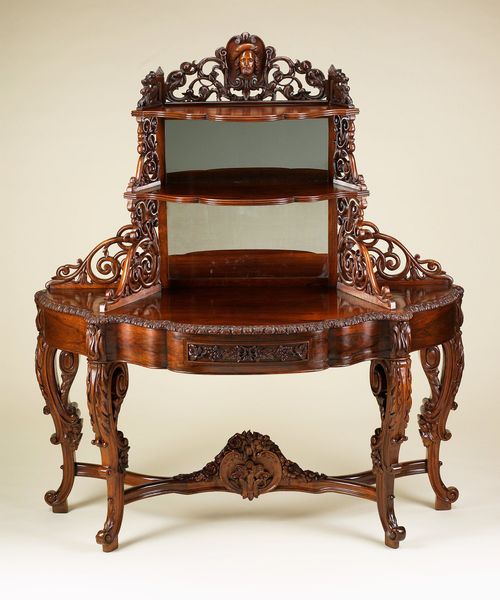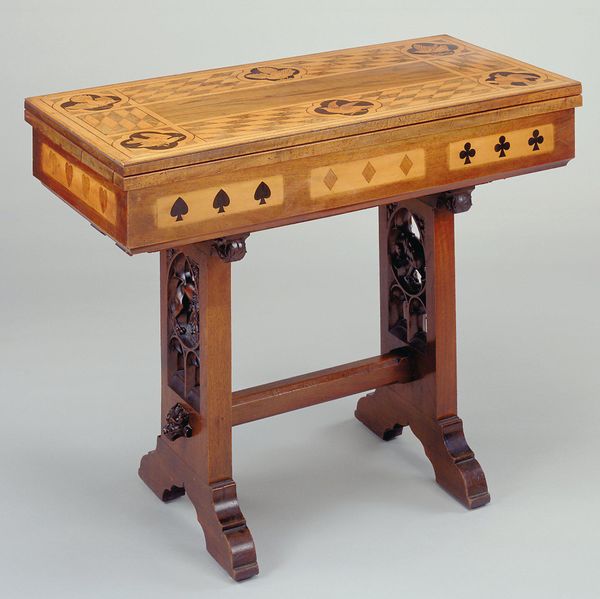
carving, wood
#
carving
#
neoclassicism
#
furniture
#
ceramic
#
men
#
united-states
#
wood
#
musical-instrument
#
decorative-art
Dimensions: 232 1/2 x 137 1/4 x 45 1/2 in. (590.6 x 348.6 x 115.6 cm)
Copyright: Public Domain
This Grand Harmonicon, of undetermined date, was conceived by Francis Hopkinson Smith. It’s made of wood, glass, and metal. It is a musical instrument which captures the period's fascination with both science and the arts. The instrument is also called a glass armonica, it creates sound through a series of rotating glass bowls. The Grand Harmonicon reflects the cultural values of its time. Music during this period was not just entertainment; it was seen as a form of social and intellectual engagement. Instruments like the glass armonica were often centerpieces in salons, spaces where elites gathered to discuss politics, philosophy, and the arts. The rise of these social spaces influenced the design and function of musical instruments. To understand the Grand Harmonicon fully, we turn to social history, examining both its material construction and its place within 19th-century society. Resources such as period diaries, musical scores, and design catalogs provide essential insights. The beauty of art lies not just in its aesthetic qualities but in its dialogue with the world that created it.
Comments
No comments
Be the first to comment and join the conversation on the ultimate creative platform.
